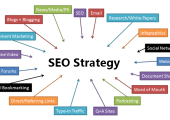Targeted marketing is the way to go today in the fast-evolving healthcare industry. In their quest for the best level of patient care, each healthcare provider has to deduce a way of ascertaining competency in competing well in the market. Indeed, data-driven marketing has revolutionized the world of how healthcare providers engage their audience in a more personalized and effective manner, and it’s highly measurable, too. Data informs health marketers about ways of optimizing ROI. Next, this blog post shows how healthcare organizations can reap maximum ROI by embracing a more data-driven way of approaching marketing-from gathering insight into patient behavior to analytics-lead campaign optimization.
The Importance of Data-Driven Marketing in Healthcare

Healthcare marketing has changed dramatically in the last decade. Whereas general, ‘one-size-fits-all’ campaigns used to dominate, today’s healthcare consumer is better informed, increasingly selective, seeking out providers who understand them and their unique needs and who will speak their language.
Data-driven marketing enables healthcare organizations to meet these expectations by deploying data into segmenting and targeting respective audiences effectively. This approach improves engagement, enhances patient experience, and above all, ensures measurable ROI.
Key Benefits of Data-Driven Healthcare Marketing
- Personalization and Patient Engagement
- Data-driven marketing, therefore, assists healthcare providers with personalized messages in the light of patient demographics, psychographics, and behavioral data.
- Personalization enhances patient engagement, therefore enhancing communication and building trust and satisfaction in general.
- Informed Decision-Making
- Analytics will have the ability to empower healthcare marketers in making better-informed decisions about where their resources are best spent, which campaigns are working, and which are not.
- This eliminates the guesswork and increases efficiency in the use of marketing spend. Improved Patient Retention
- Data-driven insight into patient behavior and preference helps health organizations build strong relationships with their existing patients, encourage repeat visits, and maintain long-term loyalty.
- High-Performing Campaigns
- Data-driven marketing equips healthcare organizations with real-time insights about campaign performance to make on-the-fly adjustments that optimize effectiveness and ROI.
Key Components of a Data-Driven Healthcare Marketing Strategy

Therefore, to tap into data-driven marketing power, the development of a comprehensive strategy for healthcare organizations that leverages appropriate toolsets and techniques is necessary. Key elements of an effective data-driven health care marketing strategy follow:
- Data Collection and Integration
Data are the basis for any data-driven marketing strategy. Healthcare organizations need to collect and integrate data from a wide variety of sources, such as:
- Patient demographics: age, gender, location, etc.
- Patient behavior: how your patients navigate and interact with your website, social media, and email campaigns.
- Patient preference: The kind of services they are interested in, and how they would want to be contacted.
- Healthcare trends: Current events going on in healthcare that may influence your patient’s behavior.
It ranges from sources like your website to social media platforms, CRM systems, and third-party data In providers. Once you integrate all these into one single system, either CRM or any marketing automation platform, then you get a 360-degree view of your audience, including ways to drive decisions based on data.
- Segmentation and Targeting
Once you have acquired and combined data, the next step is audience segmentation. In this respect, segmentation is the division of your overall patient pool into smaller groups based on certain similarities reflected by their demographic, behavioral, or preference profile.
For example, you could segment your audience into groups such as these:
- New patients: Those individuals that have recently made a first-time appointment with your facility.
- Returning patients: Those patients who have been back to your facility several times.
- Patients with chronic conditions: A patient who needs to have ongoing care for the chronic problem, such as diabetes or heart disease.
- Preventative Care patients: This category includes individuals interested primarily in prevention services such as wellness visits or vaccinations.
With this, you will be able to develop focused marketing campaigns that speak directly to the needs and preferences of every group. This does not only enhance the relevance of your messaging but also increases the likelihood of patients taking action with regard to your campaigns.
- Personalized Messaging
Once you have segmented your audience, the time will come to develop targeted messaging for each. Targeted messaging involves crafting content to appeal directly to the distinct needs and concerns of each segment.
For example,
- To new patients, the messaging can speak to why they should choose your facility to look out for their healthcare needs: convenience, expertise, and patient-centered care.
- Returning patients, for example, your messaging could focus on the benefits of continuing their care with your facility and point out new services or promotions that may interest them.
- chronic condition patients, your messaging might include education about living with and managing their condition and encourage them to schedule follow-up appointments or join health management programs.
You may want your messaging to focus on the need for regular visits and care to prevent health issues from popping up in the first place when patients come in for preventative care. By personalizing messaging, you make your campaigns more relevant-not only will you build a better relationship with your patients, but it will also be more engaging, leading to higher engagement and, ultimately, better ROI.
- Data Analytics and Campaign Optimization
Probably one of the most powerful reasons to use data in healthcare marketing is that you are actually able to track and monitor every campaign in real time. Using data analytics will give you insight into the metrics that really matter:
- Conversion rates: how many patients schedule appointments or sign up for services due to your campaigns.
- Click-through rates: how many patients click on your emails or digital advertisements.
- Engagement rates: How many patients are actually engaging with your social media post or content.
This lets you know the performance of all the campaigns, what works, and what does not. For instance, if you notice that some of your campaigns are not bringing as many conversions, using data may help you diagnose what went wrong in any area: messaging, targeting, and timing-just examples when changes could be made with a view to enhancing performance.
- Predictive Analytics for Future Growth
This is one of the coolest ways to use data-driven marketing. Based upon past, historical data, predictive analytics enable your healthcare organization to predict what’s going to happen in the future, be it trends or patient behavior.
For example,
predictive analytics can help a healthcare marketer in the following ways:
- Patient needs: You are able to predict, based upon past behavior, what services the patients may need in the future, thus helping you proactively market those services.
- Seasonal trends: With predictive analytics, you will be able to recognize the trends in patient behavior throughout the year. This can actually help you shape your marketing strategy accordingly.
- Timing: Predictive analytics will help determine when to start campaigns or send communications to reach targeted audiences.
Predictive analytics allows healthcare organizations to get ahead of patient needs and push out targeted timely marketing campaigns that drive results.
Driving ROI with Data-Driven Marketing
To maximize ROI in healthcare marketing, it calls for a strategic, data-driven approach. Collection and integration of data, segmenting your audience, crafting personalized messaging, and optimizing your campaigns by analytics will afford healthcare organizations the power to increase patient engagement and retention and ensure more conversions-each factor augmenting ROI.
In any case, the adoption of a data-driven approach to strategy in marketing is not without its challenges: investments in appropriate technology, such as CRM systems and marketing automation platforms, resources, and expertise in analytics for data interpretation to optimally execute campaigns effectively.
Why Choose Madavi Agency for Your Healthcare Marketing Needs?
At Madavi Agency, we specialize in helping healthcare organizations tap into the power of data-driven marketing toward maximum ROI. Having done health marketing for several years, experience which enthrones an understanding of peculiar challenges with different healthcare providers, we proffer tailored solutions to their needs. Our data-driven approach ensures that every campaign is optimized for success and drives measurable results in patient engagement and business growth.







